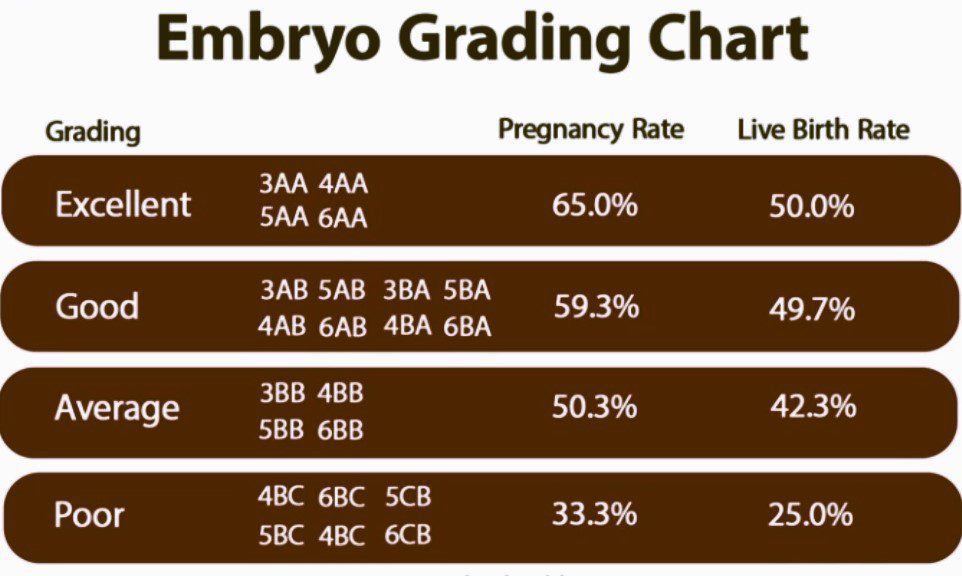The success rate of embryo transfer in surrogacy depends on multiple factors, including the quality of the embryo, the surrogate’s uterine health, and the clinic’s expertise.

On average, the success rate for a single embryo transfer ranges from 50% to 65%, while transferring two embryos can increase the chances but also the risk of twins. Factors like PGT-A testing, frozen vs. fresh embryos, and hormonal preparation also impact outcomes. Understanding these factors helps intended parents make informed decisions. Read on to explore key statistics, expert insights, and ways to maximize success.
The U.S. Centers for Disease Control and Prevention (CDC) shares important data on surrogacy success. Fertility centers in the U.S. show a 75% success rate in surrogacy. This rate jumps to 95% once the carrier is pregnant.
IVF with donor eggs has a 52% success rate. This makes surrogacy a good choice for those who can’t get pregnant the usual way. The CDC also notes a big increase in gestational carriers. They went from almost 1% to 5% of all embryo transfers in 2019.
Key Takeaways
- Surrogacy offers the highest success rate among fertility treatments
- Success rates can reach up to 95% after gestational carrier pregnancy
- IVF with donor eggs has a 52% success rate
- Gestational carrier involvement has increased fivefold in a decade
- Surrogacy provides hope for diverse family structures
Additional Resources:
How Much Does Surrogacy Cost Using Family Member
Can My Insurance Provider Pay My Surrogacy Costs?
How Much Does Surrogacy Cost in the USA?
Surrogacy Costs Breakdown for Intended Parents
📞 Get in Touch for a Free Surrogacy Consultation
📱 +91-8800481100 (WhatsApp | LINE | Viber)
📧 neelam@ivfconceptions.com
🌐 www.ivfconceptions.com
Understanding Gestational Surrogacy Success Statistics
Gestational surrogacy is a powerful way for families to become parents. It helps those facing tough fertility challenges. The process of transferring embryos has improved a lot, giving more chances for parents to have a child.
In the United States, success rates in surrogacy are very high. Data shows that embryo transfer success rates are between 75% and 85% with top-quality embryos. This shows how far medical technology has come in helping surrogacy success stories.

Current Success Rates Across Age Groups
Success in gestational surrogacy changes with age:
- Ages under 35: Up to 85% success rate
- Ages 35-40: About 75% success rate
- Ages 40 and above: Around 65% success rate
Crucial Factors Affecting Surrogacy Success
Many things can affect how well surrogacy works compared to traditional pregnancy:
- Embryo Quality: Genetic screening boosts success chances
- Surrogate’s Health Profile
- Medical Technology Precision
- Hormonal Balance
Age-Related Considerations
The age of egg donors is key to success. Eggs from younger donors (usually under 35) have better implantation rates and healthier growth. Preimplantation genetic testing helps pick the best embryos for a higher success rate.
It’s important to remember that every experience is different. But, thanks to modern reproductive technologies, more families are creating through gestational surrogacy.
Surrogacy Embryo Transfer Success Rate
Gestational surrogacy is a big help in assisted reproductive technology (art). It gives hope to those facing fertility issues. The success rates of embryo transfers are very encouraging for those wanting to start a family.
Recent data from fertility centers show great stats for surrogacy outcomes. In vitro fertilization (ivf) with surrogacy shows a lot of promise:
- Surrogacy implantation rates approach 75%
- Once pregnancy is established, live birth rates reach 95%
- More than 50% of embryo transfers result in pregnancy
The criteria for choosing a surrogate are very important. Fertility specialists look at several key factors:
- Medical history and reproductive health
- Age and physical condition
- Psychological readiness
- Previous pregnancy experiences
Legal considerations in surrogacy also play a big role. Each state has its own rules for gestational surrogacy. It’s crucial to get legal advice for both intended parents and potential surrogates.
The age of egg donors is very important for success. Donors in their 20s and early 30s have the best quality eggs. This greatly improves the chances of a successful embryo transfer. Some fertility centers even report implantation rates as high as 75%.

Key Factors Influencing Successful Surrogate Pregnancies
Understanding surrogate pregnancies is complex. It involves many important factors. The success of embryo implantation depends on medical and genetic details. These factors greatly affect the chances of a successful pregnancy.
Egg and Embryo Quality Assessment
Embryo quality is crucial for successful pregnancies. Fertility clinics show that high-quality embryos lead to healthier pregnancies. Important aspects of embryo assessment include:
- Comprehensive genetic screening
- Preimplantation genetic testing (PGT)
- Evaluation of chromosomal integrity
Intended parents get help from advanced genetic testing. This testing finds genetic issues and chromosomal problems before the embryo is transferred.
Surrogate Medical Screening Criteria
Medical screening is key for successful pregnancies. It includes:
- Detailed reproductive health history
- Physical examinations
- Psychological assessments
- Comprehensive fertility screenings
Younger surrogates tend to have better success rates. The best candidates are usually between 21-40 years old.
Impact of Medical Technology Advances
New technologies have changed the world of surrogate pregnancies. Techniques like intracytoplasmic sperm injection (ICSI) and single embryo transfer (SET) have boosted success rates.
| Technology | Success Rate Improvement |
| Preimplantation Genetic Testing | 75% reduction in genetic abnormalities |
| Single Embryo Transfer | Increased pregnancy outcomes by 60% |
| Advanced Genetic Screening | 95% accuracy in embryo viability |
New medical technologies are changing surrogate pregnancy outcomes. They bring new hope to intended parents.
The Role of Medical Protocols in Surrogacy Success
Medical protocols are key to successful ivf surrogacy. They help improve gestational surrogacy rates and embryo transfer outcomes. New technologies like preimplantation genetic testing (PGT-A) have changed the game.
Important medical protocols for better surrogate pregnancy success include:
- Comprehensive genetic screening
- Advanced embryo selection techniques
- Rigorous medical evaluations for surrogates
- Precise hormonal and medication management
Preimplantation genetic testing for aneuploidy (PGT-A) is a game-changer. This technology lets doctors check chromosomal normality with 99% accuracy. It greatly boosts embryo transfer success rates.
| Protocol Category | Success Impact | Recommended Frequency |
| Genetic Screening | 75-80% success rate | Prior to embryo transfer |
| Hormone Management | Increases pregnancy potential | Throughout surrogacy journey |
| Embryo Quality Assessment | Up to 95% success after pregnancy confirmation | Multiple checkpoints |
Understanding surrogacy laws and regulations is crucial. Strict medical protocols are followed. They protect everyone involved and aim for a successful pregnancy.
Conclusion
Surrogacy has seen big changes, with clinic stats showing a bright future for parents-to-be. About 60% of first-time embryo transfers lead to a live birth. This gives hope to those facing reproductive issues.
Success rates for multiple embryo transfers and new medical methods have gone up. Now, about 80% of surrogates get pregnant within two tries. The process is detailed, with strict rules for the carrier’s age and health.
Even with failed embryo transfers, the journey of surrogacy offers hope. The medical world keeps getting better, with live birth rates from 29.9% to 43.7%. This shows how far reproductive medicine has come in helping people have kids.
Surrogacy is more than a medical act; it’s a journey of hope and connection. It’s about creating families. The growing success and acceptance show the need for caring, advanced reproductive support.

FAQs for Surrogacy Embryo Transfer Success Rate
What is the average success rate for gestational surrogacy?
The success rate for gestational surrogacy is between 60-75%. This depends on the egg donor’s age, embryo quality, and the surrogate’s health. Fertility clinics using IVF can get live birth rates up to 70%.
How does the age of the egg donor impact surrogacy success rates?
Egg donor age is very important. Donors aged 21-32 have the best success rates. Younger donors (under 35) have better implantation and pregnancy outcomes. Success rates drop by up to 20% for donors over 35.
What medical screenings are required for potential surrogates?
Surrogates need many medical screenings. These include medical history checks, physical exams, and psychological evaluations. They also need fertility tests, genetic screenings, and tests for infectious diseases. These steps ensure a healthy pregnancy and successful surrogacy.
How many embryo transfers are typically attempted in a surrogacy process?
Fertility clinics usually suggest 1-2 embryo transfers per cycle. Single embryo transfer is popular to avoid multiple pregnancies. The exact number depends on the embryo’s quality, the surrogate’s health, and medical protocols.
What factors most significantly impact surrogacy success rates?
Success rates depend on egg and embryo quality, the surrogate’s health, and the age of genetic contributors. Advanced technologies like genetic testing and precise medical protocols also play a big role. The health of both egg donors and surrogates is crucial.
How do frozen embryo transfer success rates compare to fresh embryo transfers?
Frozen embryo transfer success rates have improved a lot. Studies show they are often as good as, or even better than, fresh transfers. Live birth rates for frozen transfers are around 50-60%, depending on the situation.
What legal considerations are important in surrogacy arrangements?
Legal agreements are key in surrogacy. They cover parental rights, compensation, medical decisions, and pregnancy complications. It’s important to have clear agreements between intended parents and surrogates. Legal rules vary by state, so getting professional advice is essential.
How long does the entire surrogacy process typically take?
The surrogacy journey takes 12-18 months. It includes screenings, matching, medical prep, embryo transfer, pregnancy, and legal steps. Each journey is different, based on medical and legal factors.
What are the success rates for surrogacy for intended parents over 40?
Success rates for older intended parents are lower. But, advanced technologies have improved outcomes. Using younger egg donors and thorough medical screening can help. Success rates for older parents are still around 50-60%.
How do surrogacy success rates compare to traditional pregnancy?
Surrogacy success rates are similar to traditional pregnancy. Modern technologies often provide better success rates. Professional medical care and thorough screening lead to promising outcomes for intended parents.
Resoruces used:
- American Society for Reproductive Medicine (ASRM)
https://www.asrm.org - Resolve: The National Infertility Association
https://resolve.org - European Society of Human Reproduction and Embryology (ESHRE)
https://www.eshre.eu - Society for Assisted Reproductive Technology (SART)
https://www.sart.org

